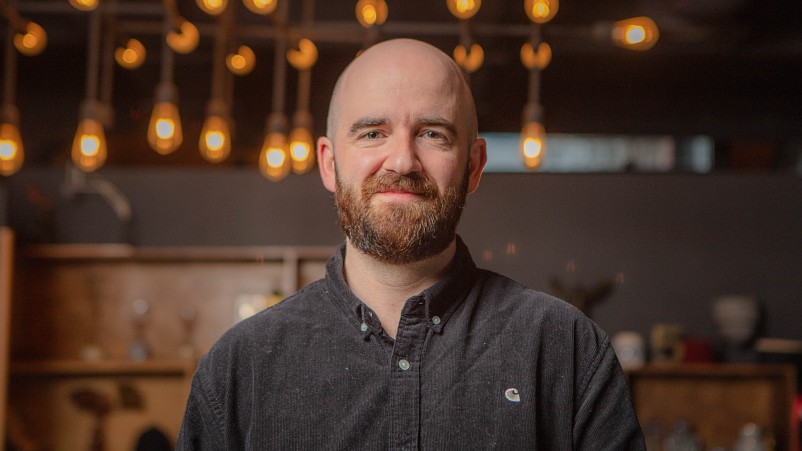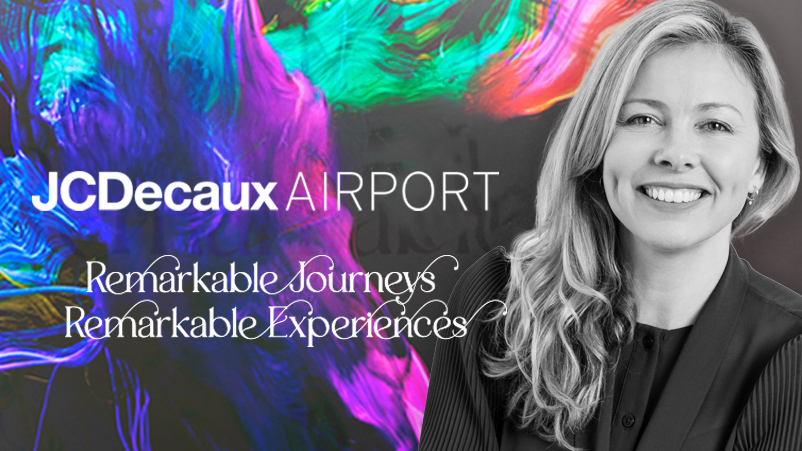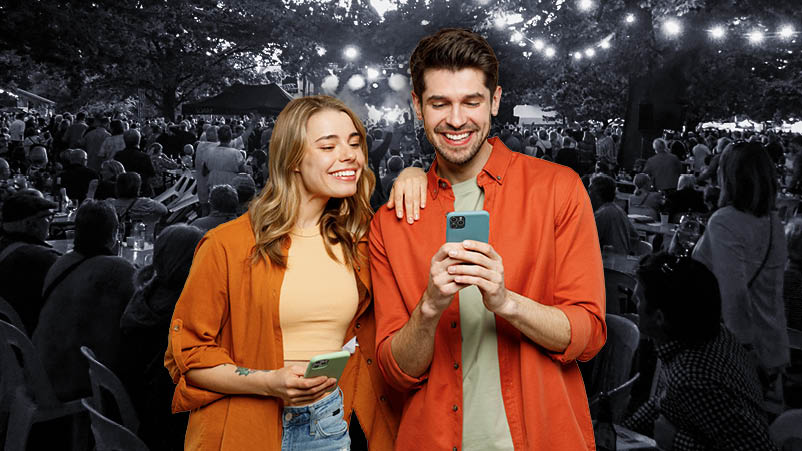'80% conversion rate, 25x growth': Hoka taps experiential, content and authentic influence in bid to double sales and brand awareness

A commitment to building brand awareness coupled with running’s explosive popularity and a diversifying product portfolio have seen Hoka power 25x in under a decade: In 2015 it sold 40,000 pairs of shoes in Australia, today it sells more than 1 million. Now it's aiming to double that. Local success is indicative of rapid global growth for the running and trail shoe brand, which reported a 34 per cent increase in sales in the last quarter to 31 March 2024, bringing quarterly revenue to US$533 million and global revenue to US$1.8 billion, up 29.7 per cent year-on-year. Hot on the heels of a successful five-day experiential-led campaign in Sydney with its Hoka FlyLab cube and content program, Hoka ANZ chief, Matt Adams, and Emotive founder and CEO, Simon Joyce, unpack what it takes to balance brand investment with commercial return – and take a proactive over reactive marketing approach. Once people try the shoes, says Adams, 80 per cent of them buy.
What you need to know:
- Brand building is the name of the game for Hoka and it’s willing to put the dollars into experiential activities, partnerships and marketing that enables consumers to engage with its ethos of ‘joyful running’ to achieve it.
- The brand focus is paying off: Hoka is the fastest growing running and trail shoe brand in the world, chalking up 34 per cent sales growth in its latest quarter to US$1.8 billion annually.
- In its latest Australian campaign, Hoka worked with Emotive on a five-day activation called FlyLab in Sydney’s Pitt Street Mall, attracting thousands of participants and reporting average dwell times of 6 minutes.
- With 23 per cent brand awareness in Australia right now, double that of a year ago, Hoka is looking to climb up to 40-plus per cent by the end of this year through its branded marketing efforts.
- According to ANZ head, Matthew Adams, Hoka is “a perfectly made formula of disruptive brand that’s fast, edgy, cool, but at a technical level, it feels amazing and solves problems. It’s just what Apple has done – it’s a brand that solved people’s problems as well.”
- Emotive founder and CEO, Simon Joyce, says experiential has been seen as a bit of a luxury for brands, attributing this to a lack of longterm thinking and failure to recognise the post-event content and full-funnel impact such investments can have. “But in Hoka’s playbook, that level of innovation applied to the product needs to be applied for the marketing. That’s paramount,” he says.
- Plus driving more people to experience the shoes is highly likely to pay off: Per Adams, Hoka has an 80 per cent conversion rate from people putting on the shoes to buying them.
Every brand thinks it has innovation. Our conversion rate of putting on a pair of Hokas to buying them is 80 per cent, which is phenomenal. There is the technical part to innovation... But you cannot beat the simple principle and practice of when you put a pair of Hokas on, it feels amazing underfoot.
Growth sprint
It’s a 15-year-old running shoes brand out of France that’s chalked up 25x growth in Australia in less than a decade. It’s also boosted brand awareness from 11 per cent to 23 per cent year-on-year and has its sights set on achieving 40 per cent by the end of 2024 in Australia, a figure it’s just reached in the US.
Hoka’s local growth trajectory leaves rivals looking a little flat-footed. But for head of ANZ, Matthew Adams, it’s still early days for the brand and he has a target of 2 million shoe sales per annum locally in his sights. He says it's Hoka that's playing catch-up, at least in awareness terms.
“Even when you lay those numbers in, traditional running brands are sitting in the 70s, 80s and 90s. We’re still very much in awareness building and brand building phase,” he tells Mi3.
And that’s exactly what’s on the roadmap from a program perspective. For Adams, it’s less about education on specific shoes and more about brand building around Hoka’s principles and DNA, which it groups under the brand positioning of ‘joyful running’.
“Understanding the commercials of a business like Hoka is about great balance. That’s especially the case in today’s world but also in general when you’re growing. It’s about balancing commercial return with brand growth and health. It’s why Hoka globally is doing well – we’re getting the balance right and investing in brand,” Adams says.
Investing in experiential
Last week, this commitment to brand manifested in the Hoka FlyLab, an experiential concept the business has been rolling out across several cities including Hong Kong, China, Paris and now Sydney. Installed in Sydney’s Pitt St Mall from 5 – 10 June, and coinciding with internationally running day on 5 June, the cube contained a SafeSize 3D scanner to provide personalised product recommendations to consumers onsite, plus a showcase of Hoka shoes led by two highlight trainers: The Skyward X, with Hoka’s maximalist design, plus the Cielo X1, a road racer.
The five-day activation, built by Emotive, was further augmented by a series of masterclasses covering topics such as nutrition, health, performance and technology. There were appearances by Hoka ambassadors include founder of the Unofficial Run Club, Chad Cohen, clinical nutritionist and founder of the Good Day Wellness podcast, Melissa Fedele, plus athletes such as Bel Fong (coach for RUN with Turia Pitt), Matt Smith (Australian duathlon champion and recent second place finisher at Hoka Runway Sydney Half Marathon) and Craig Alexander (5x Triathlon World Champion). There was also a dedicated Hoka run on 5 June.
Telling not selling
“There was no brief to sell shoes, or commercial return on the spot, it’s about building awareness and brand, because the commercial results will come from that,” Adam says. “But it’s always a challenging investment to make as you’re spending for the future – it’s a tricky one to balance up and get right.”
The in-person cube was attended by thousands of participants across the five days, Emotive said, with an average dwell time of 6 minutes recorded onsite and all masterclasses booked out. In addition, partnerships with seven influencers and media partners along with a targeted PR campaign resulted in content reach of more than 2.4 million nationally. Media and contents partners included Hype Beast and The Daily Aus.
FlyLabs is a perfect example of the defined Hoka playbook, which is anchored in lifting brand awareness by getting consumers interacting more with the brand in activities and campaigns that epitomise its ethos. The brand, which initially launched in France to solve a technical problem with running shoes for outdoor environments, was purchased by Deckers Brand in 2013 for US$1.1 million and has since been pivoting to embrace consumers alongside athletes and serious runners.
According to its latest financial report, it’s 18-to-34-year-olds that are now its strongest customer growth segment, and Hoka has seen a doubling of awareness with this group internationally over the last year.
“There are trends that come and go all the time – everyone constantly hears about a brand that’s trending - but with Hoka, it’s still very much that we have the technical aspects plus comfort. It’s a perfectly made formula of disruptive brand that’s fast, edgy, cool, but at a technical level, it feels amazing and solves problems,” Adams says. “It’s like what Apple has done – it’s a brand that solved people’s problems as well.”
Feet sweet spot
For most people, going out running is a free activity, which makes it a particularly appealing activity for cash strapped consumers.
“We live in an era where people are more aware of their mental health, running has been proven to have upsides for mental health,” Adams continues. “There’s also diversification and frequency of purchase. It used to be you’d buy running shoes and those were your runners. Now, you have different running shoes for different purposes. The consumer evolution has come on in leaps and bounds. You might have a race day pair, fast tempo shoes, everyday running shoes. That has become a mainstream play, whereas if you heard of someone previously having 3-4 pairs they’d be a marathon runner. The industry and who we can tap into has certainly grown.”
And Hoka has found the sweet spot, growing a portfolio of products for runners firstly, and extending into the trail and outdoor business. There’s also a kids range for those aged 5 to 10.
“I think every brand thinks it has innovation. Our conversion rate of putting on a pair of Hokas to buying them is 80 per cent, which is phenomenal,” Adams says. “There is the technical part to innovation, which I think consumers are more aware of and have a desire to understand now. But you cannot beat the simple principle and practice of when you put a pair of Hokas on, it feels amazing underfoot. We’re lucky the innovative element here is very technical, but the way a consumer can simplify that in their minds is to just put a pair on.”
All about brand
Partnerships are another spoke within Hoka’s marketing wheel, and it took headline sponsorship for the Sydney Half-Marathon from this year. It’s also partnering with the UTMB (Ultra-Trail du Mont-Blanc) trail running world series in France and Iron Man in New Zealand. All these are very authentic at a core running level, Adams says.
“Then there’s FlyLab, which is an investment from a brand awareness and moment point of view and in giving consumers a way to see, understand and connect with the brand,” he says.
Also coming in July is a brand anthem, a digital play again about reiterating and amplifying what the Hoka brand stands for.
“The piece Hoka continues to drill down on is the brand building phase, awareness and upper funnel. The lower funnel of conversion and shopping metrics are still there and will become more important at a later date. Right now, it’s very much continuing to educate and tell people about our brand,” Adams says.
Hoka products are distributed through a mix of wholesale relationships with retailers large and small (Hype DC, Rebel, Stylerunner among them) plus a direct-to-consumer retail channel which, while growing, is not destined to become the be-all retail channel long term, Adams insists (unlike Apple’s post-2000 retail play).
“It’s not a journey where we’ll grow Hoka retail at the expense of our wholesale partners – that’s an important distinction,” he adds.
The way we view experiential is yes, we’ve got a core job to do on the ground – it’s a giant, interactive billboard you can see all the way down Pitt Street. But we also view it in terms of being a TV or content set.
Reactive versus proactive
Emotive founder and CEO Simon Joyce, describes the FlyLabs concept as part-experiential, part-content hub delivering the “cool credibility we needed” to give Hoka a solid brand boost.
“When you work on a brand that has a brand-led philosophy from the top, that does understand the long and short of it, and gives you these creative opportunities, it’s a beautiful thing. You see the impact it’s having on awareness and know what’s coming from a product innovation point of view,” he says. “Right now, marketing just feels so reactionary for our clients and it’s difficult to have a longer-term point of view and state of the nation plan.”
Joyce sees more pressure than ever on marketers to prove out and optimise the value of any campaign activity.
“That’s especially the case when it comes to activations. More so in years past, experiential has been seen as a bit of a luxury for brands,” he says. “But in Hoka’s playbook, that level of innovation applied to the product needs to be applied for the marketing. That’s paramount.”
Given Hoka’s 23 per cent brand awareness status, getting the most out of the FlyLab experiential investment is about extracting value not just during the campaign period, but beyond. To do that, Emotive has been banking a lot of content that’s evergreen the team can keep coming back to.
“There’s more scrutiny of activity – I’m seeing it across the client base. Marketers are still willing to spend, but the ecosystem you create and insatiable appetite for content, alongside such a cluttered content world, brings those discussions more to the forefront,” Joyce comments.
“The way we view experiential is yes, we’ve got a core job to do on the ground – it’s a giant, interactive billboard you can see all the way down Pitt Street. But we also view it in terms of being a TV or content set. It’s what we’re doing in the lead-up; it’s booking people in for the masterclasses; it’s the various media and influencers coming in and earned media. Then there’s a whole stream of content being created that ladders back to Hoka’s ‘joyful performance’ positioning we can push out to all the people who couldn’t be there.”
That’s where short-term thinking is also catching brands out, making it difficult for others to invest in these spaces.
“On a cost per engagement basis, in the old world of experiential where I’m just focused on footfall, does it stack up? Yes, it does that. But it’s also a content set that’s on point for the brand to blow out to the masses,” Joyce says. “It becomes a very different return on investment equation. We have social, talent, PR, experiential, brand partnerships – it all comes together as one. Those are the areas to garner more earned, but still off the power of a simple idea straight off the brand positioning. It feels very cohesive.”



